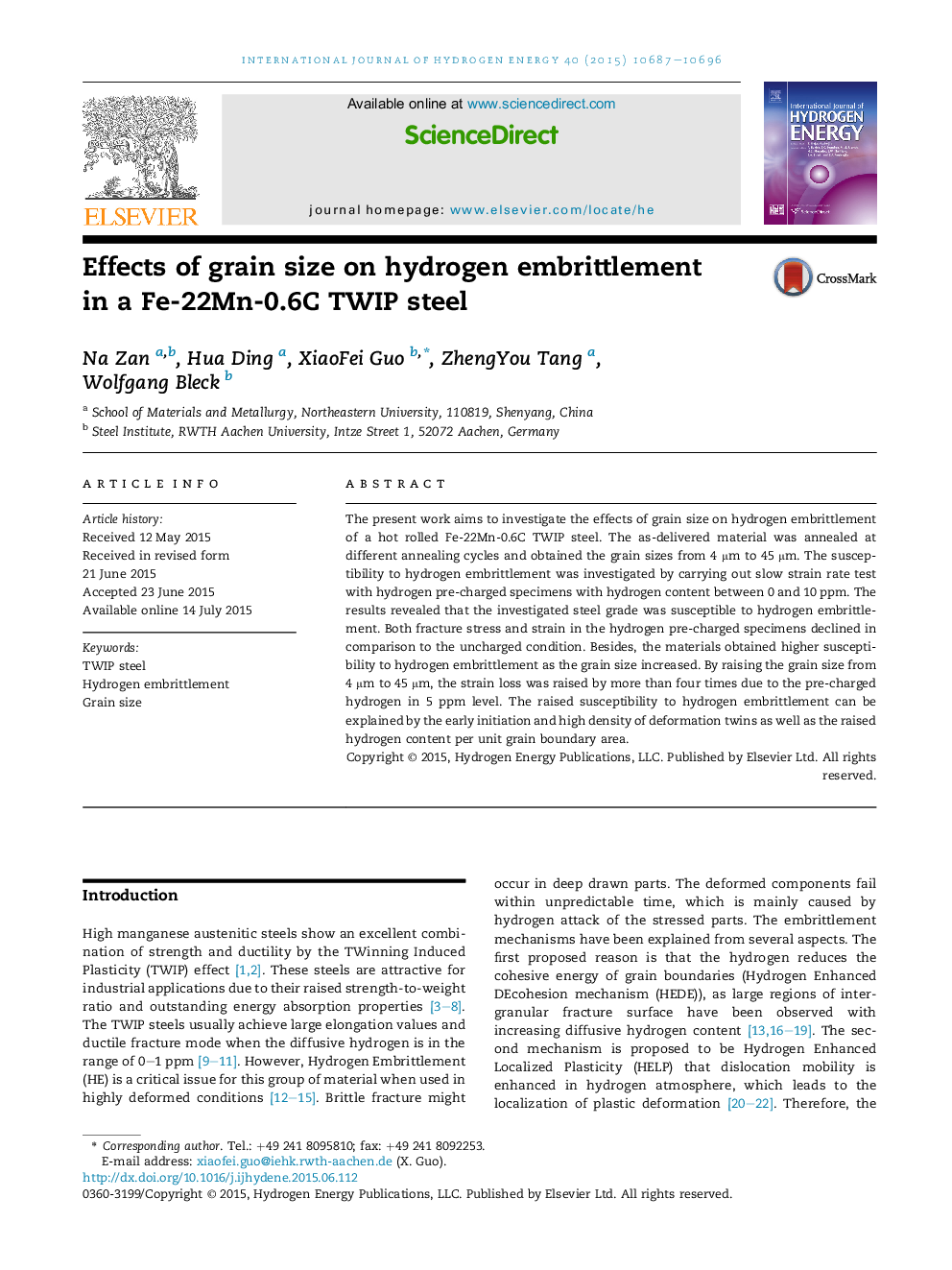| Article ID | Journal | Published Year | Pages | File Type |
|---|---|---|---|---|
| 1279119 | International Journal of Hydrogen Energy | 2015 | 10 Pages |
•Grain refinement enhances the resistance to HE in a Fe-22Mn-0.6C TWIP steel.•Deformation twins exist in higher density in the coarse grain size material.•Diffusive H per unit grain boundary area is higher as grain size increases.•The fracture morphology is greatly influenced by the amount of H.
The present work aims to investigate the effects of grain size on hydrogen embrittlement of a hot rolled Fe-22Mn-0.6C TWIP steel. The as-delivered material was annealed at different annealing cycles and obtained the grain sizes from 4 μm to 45 μm. The susceptibility to hydrogen embrittlement was investigated by carrying out slow strain rate test with hydrogen pre-charged specimens with hydrogen content between 0 and 10 ppm. The results revealed that the investigated steel grade was susceptible to hydrogen embrittlement. Both fracture stress and strain in the hydrogen pre-charged specimens declined in comparison to the uncharged condition. Besides, the materials obtained higher susceptibility to hydrogen embrittlement as the grain size increased. By raising the grain size from 4 μm to 45 μm, the strain loss was raised by more than four times due to the pre-charged hydrogen in 5 ppm level. The raised susceptibility to hydrogen embrittlement can be explained by the early initiation and high density of deformation twins as well as the raised hydrogen content per unit grain boundary area.
